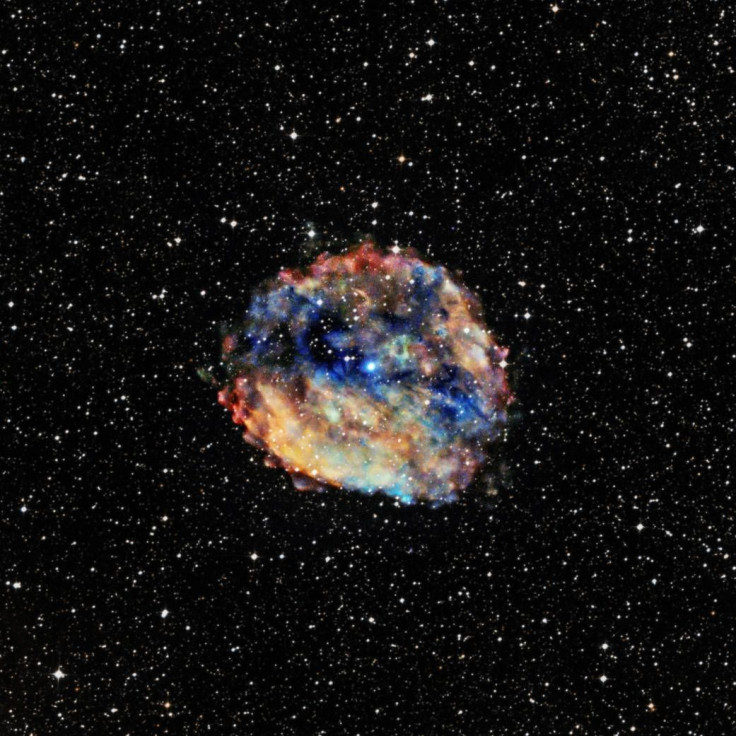NASA’s Chandra Observatory Likely Discovers Slowest-Ever Pulsar

Astronomers have used NASA’s Chandra X-ray Observatory and other similar facilities to discover a new rotating neutron star, which is claimed to be one of the most extreme pulsars ever detected as its spin period is thousands of times longer than any such objects found so far.
Scientists already knew that there is a dense, compact source at the center of RCW 103, the remains of a supernova explosion located about 9,000 light years from Earth. RCW 103 contains three bands of X-ray light, and the Chandra observatory helped identified the highest energy X-rays – dubbed “1E 1613” – in the middle of RCW 103.
Astronomers had previously agreed that 1E 1613 is a neutron star. However, the regular variation in the X-ray brightness of the source, with a period of about six and a half hours, baffled scientists, who were confused whether 1E 1613 is a spinning neutron star rotating extremely slowly, or it is a faster-spinning neutron star in a binary system with a normal star.
“Several interpretations of the nature of this system have been proposed, from an isolated slowly spinning magnetar with a substantial fossil-disk, to a young low mass X-ray binary system, or even a binary magnetar, but none of them is straightforward, nor can they explain the overall observational properties,” researchers said in a study, published in the Sept. 2, 2016, issue of The Astrophysical Journal Letters.
On June 22, NASA’s Swift telescope captured the release of a short burst of X-rays from 1E 1613. To further investigate, astronomers led by Nanda Rea of the University of Amsterdam sought help from NASA’s Chandra and Nuclear Spectroscopic Telescope Array, or NuSTAR, to follow up with the observations.
New data from these powerful telescopes later confirmed that 1E 1613 has the properties of a magnetar – a type of neutron star with an extremely powerful magnetic field – making it only the 30th known one. However, 1E 1613’s slow spin remained a mystery with its source rotating once every 24,000 seconds (6.67 hours), compared to other known slow magnetars that spin around once every 10 seconds.
“While it is still unclear why 1E 1613 is spinning so slowly, scientists do have some ideas. One leading scenario is that debris from the exploded star has fallen back onto magnetic field lines around the spinning neutron star, causing it to spin more slowly with time,” NASA said in a statement.
© Copyright IBTimes 2024. All rights reserved.






















